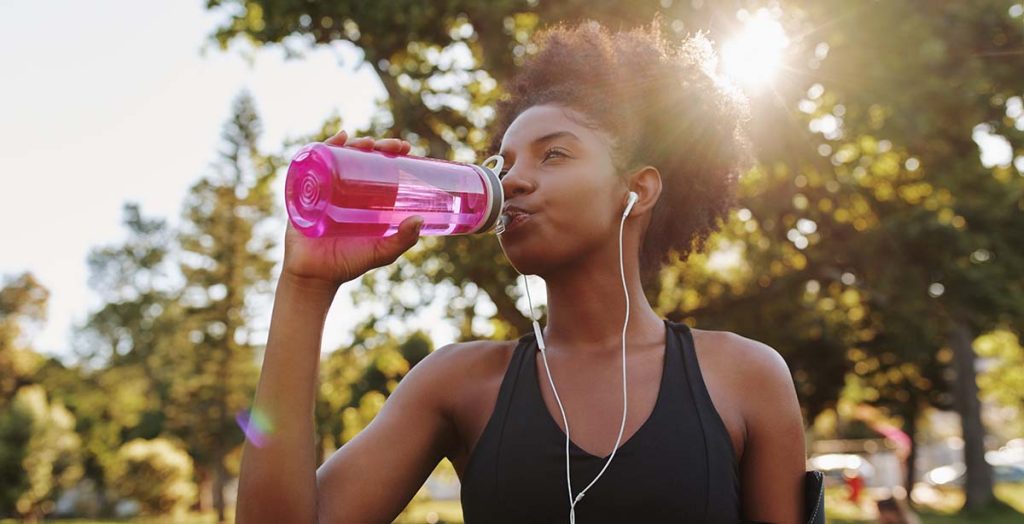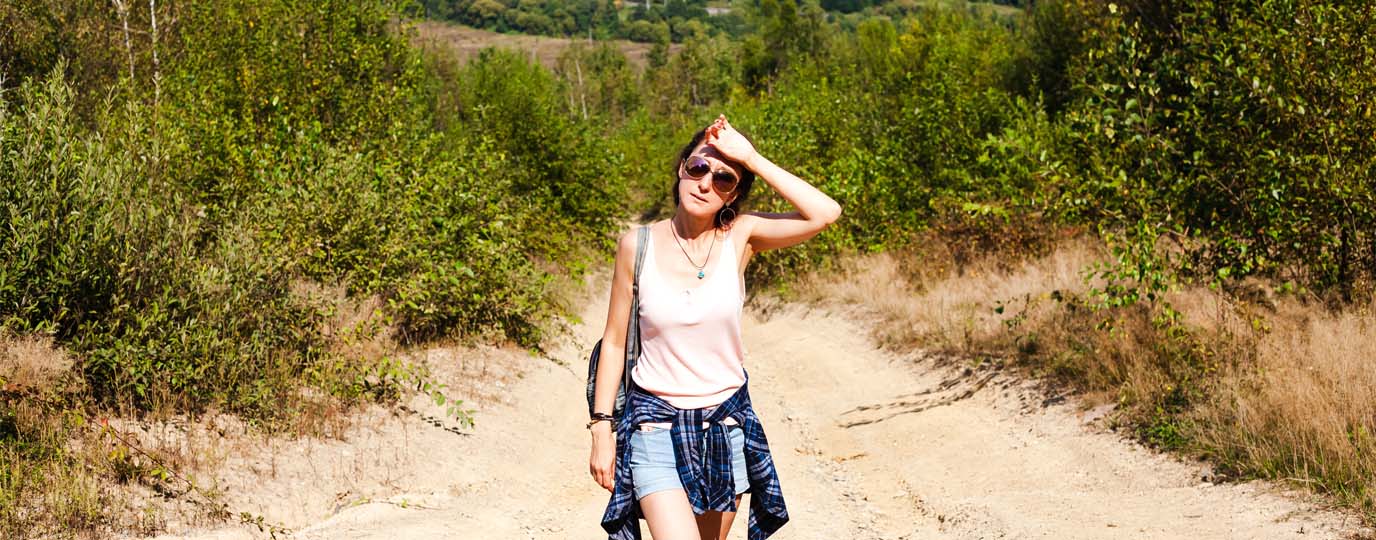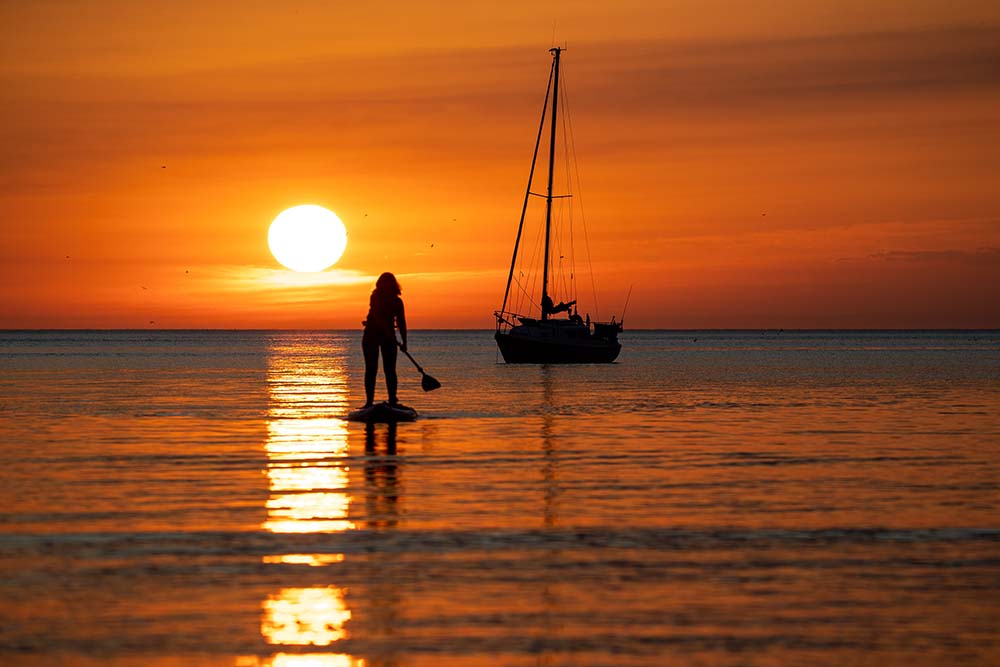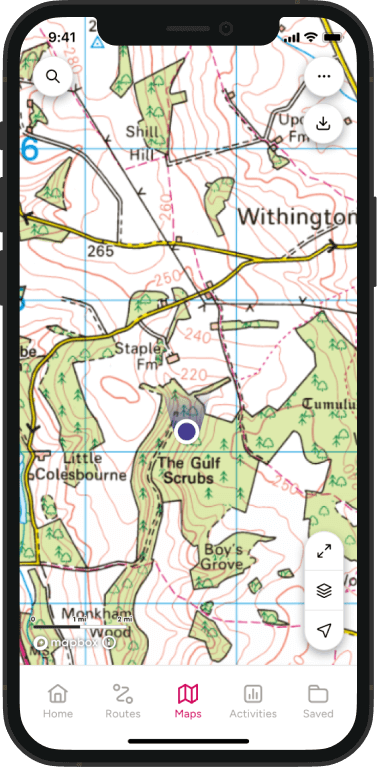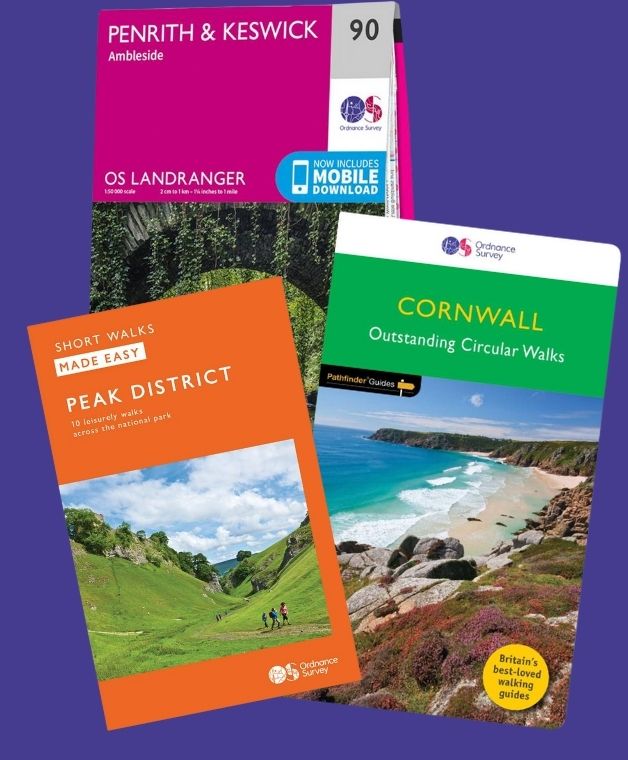It’s getting warm out there, so I’ve collected some quick tips on walking and running in hot weather.
For walkers
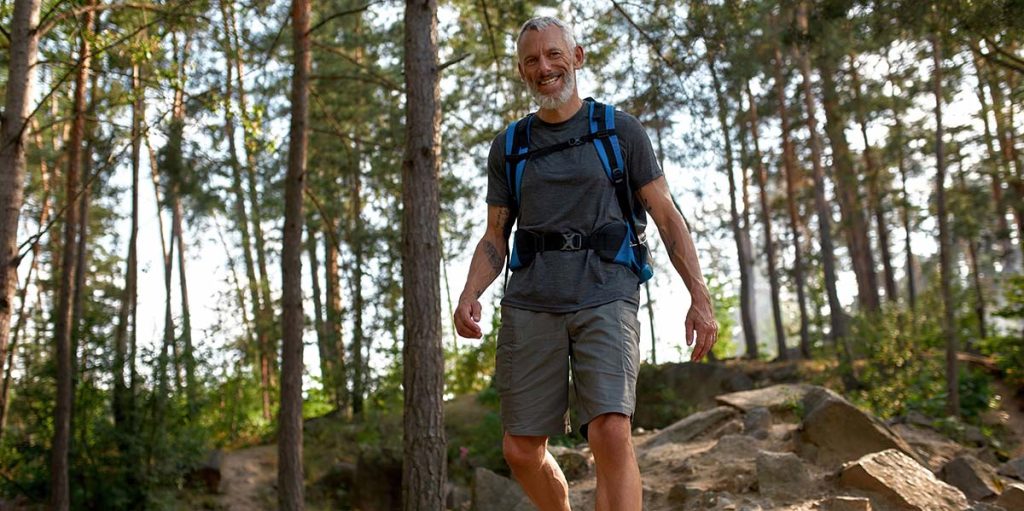
Hot weather does not mean you cannot walk, but you might need to change things a bit. Here’s my guide.
Pick your routes
- Look for routes with tree cover where possible. Many forests are open access land and will provide shade all day. Alternatively, routes that follow rivers and canals are often considerably cooler.
- Be aware of higher altitudes. While they often feel cooler due to more wind, you are more exposed to strong UV light, which will dehydrate you faster and may cause sunburn.
- You might want to shorten your routes, as the heat will generally make you tire more quickly until your body gets used to it (which the the UK almost certainly means the heat wave is about to end)
- Pick routes that pass pubs, shops and cafes where you can stop to get a drink and even just cool off in aircon for a few minutes
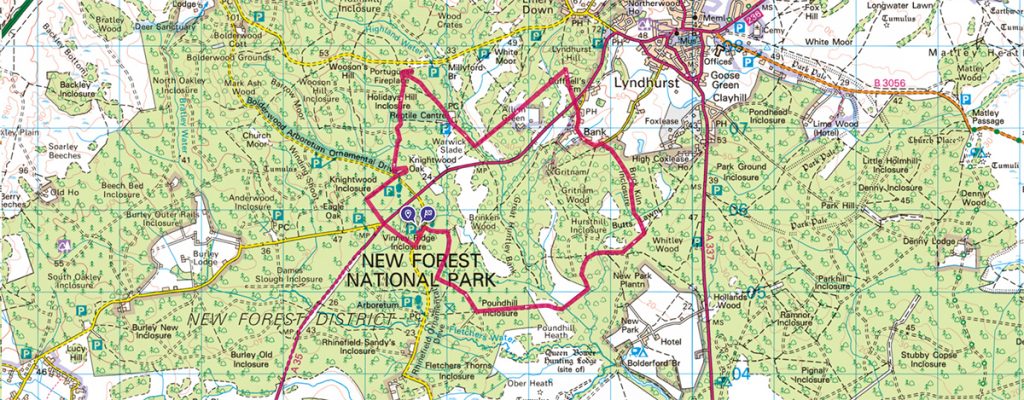
Use your map or guidebook to find a route with tree cover
Pick your gear
- Light, loose, breathable clothing is the comfiest option. If you have light skin consider wearing long sleeves and trousers to protect from sunburn. Exposed shoulders are usually a bad idea.
- Use 30+ sunscreen on any exposed bits. Bring it with you as you may sweat it off, or stop for a splash in a stream
- Wear a hat! While I normally wear a cap, when there’s strong sunlight wear something with a brim all the way around to protect your ears and neck. Many hats now come with a UV rating – look for something 50+
- A hat helps a lot with protecting your eyes, but bring sunglasses too. They are especially useful in more exposed areas or near water which may reflect a lot of light
- You may need to drink up to a litre of water an hour, so make sure you bring enough. I find several small bottles easier than one large one. One or two frozen bottles will give you nice cool water as it melts – and cool your back down too!
- Many mid-size and rucksacks are set up to be held away from the back using mesh, straps or frames. This will help prevent your back getting sweaty, and help keep you cool.
- Swap your waterproof boots or shoes for highly breathable shoes or even (horrors) walking sandals with socks.
While Walking in hot weather
- You may find yourself going a little slower than usual, especially on uphill slopes. It’s fine!
- Keep hydrated by drinking before you get very thirsty. It’s easier to carry water in you than in your pack. It’s also a good idea to have an extra bottle of water in the car and drink at least half a litre before setting off. You’ll probably sweat it out so not need a badly timed wee.
- Where possible, pick your path in the shade. Even just partial shade by walking next to a hedge can make a difference.
- As well as losing water, you lose salts. The odd salty snack like crisps or nuts can help, or you can use sports drinks.
- Keep an eye out for signs of heatstroke: hot, dry skin, headache, dizziness, nausea and confusion. It can happen to anyone, but those over 75, those who have heart or respiratory conditions, people with diabetes and those on some medications are at higher risk. If you spot the signs get to shade, try and cool them down with damp clothing, give them water to drink and if they do not improve call an ambulance or mountain rescue.
- A quick jump in a river or the sea may appeal when you are overheating, but the water may still be very cold, leading to the risk of cold water shock which can paralyse even strong swimmers. There’s also the risk of hidden obstacles. It’s usually better to wade in than jump.
For Runners
I asked Nicole Frith, one of our OS resident runners for her tips on running in hot weather.
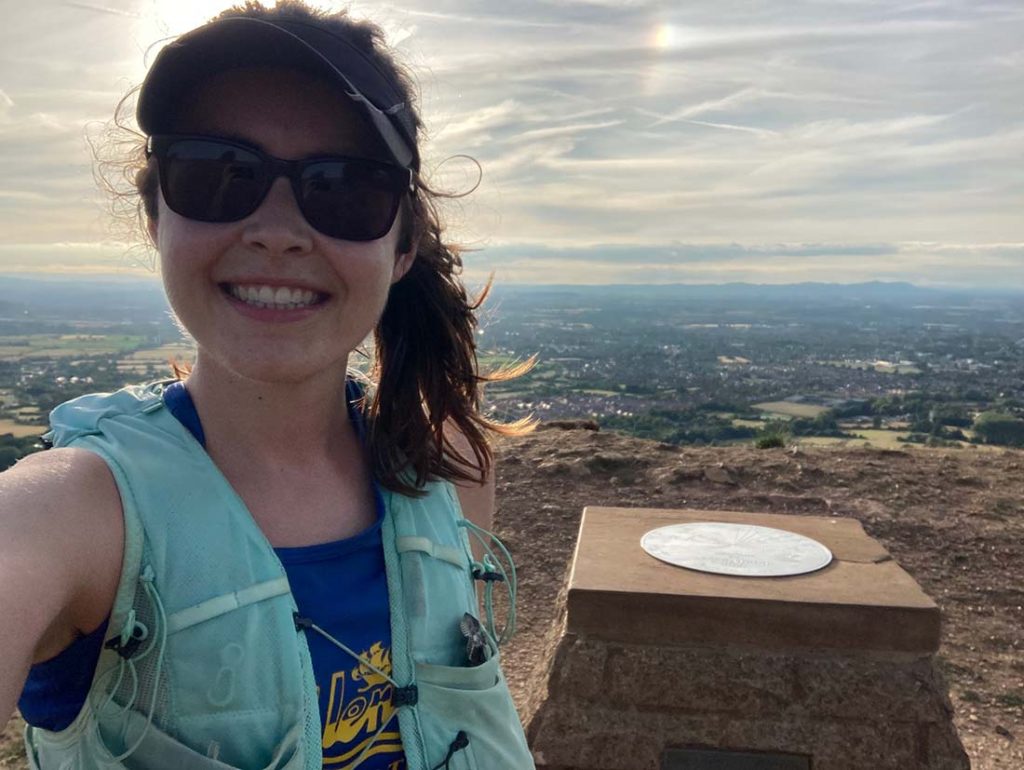
Nicole proving you can do a big run in hot weather
Plan to avoid or reduce it
- Go first thing in the morning. It’s far cooler first thing in the morning, so if your schedule allows it, it might be worth giving your usual weekend lie-in a miss and going early. (Remember, if you are running before breakfast, keep this to no more than 60 mins and keep it easy, especially for women. Ideally, try to eat something before you go, even if it’s just half a banana or a single weetabix).
- Seek out shade. Running on trails will almost always be cooler than running on the roads because the ground absorbs & reflects less heat, there will usually be more tree cover, and less of an urban heat island effect if you are in the countryside. This makes a big difference to running in direct sunlight and is a good way to add some variety if you usually run on tarmac. If you can’t find or access trails, then green spaces like parks offer a good alternative. And worst case scenario – run on the shaded side of the street.
- Swap your run to the treadmill or, if you would prefer to be outside still, the bike. Air conditioned gyms will be cooler, but potentially more boring. If you still want to get outside, cycling is far cooler and you have more wind from moving faster.
If you can’t avoid it…
Prepare for It
- Get the basics right: Protect your skin, face and eyes with suncream (Factor 50, UVA & UVB), a cap or visor and sunglasses.
- Think about your clothing: Lighter coloured clothing will keep you cooler than darker coloured clothing. A crop top or vest will be much cooler than running in a t-shirt, but exposes more skin to the sunlight so make sure you wear sunscreen.
- Take lots of water or know where you can get it on route: Carry more water than you usually would. Drink to thirst and consider adding electrolytes to one of your bottles or for when you get back. Remember that if you usually plan to get water from streams when in the hills, these might be dry.
- The old ‘water on your head’ trick. Dunk your cap in water or pour it on your head. It makes you feel far cooler. You can also cool your body by wetting sections of your clothes in the same way.
Train for it
- Adjust your training sessions: Everything will feel harder, especially if you haven’t done much running in heat before. Run to effort and feel, rather than fixating on a certain time. Cut back the number of reps or the length of the reps to reduce the overall effort. Extend the recoveries to give your body a little longer to cool down.
- Acclimatise: Acclimatising to heat is one of the quickest adaptations and even after just a couple of weeks, it will feel easier as your body adapts. Give it time and build up slowly because you can get some training benefits from the heat, but do be careful.
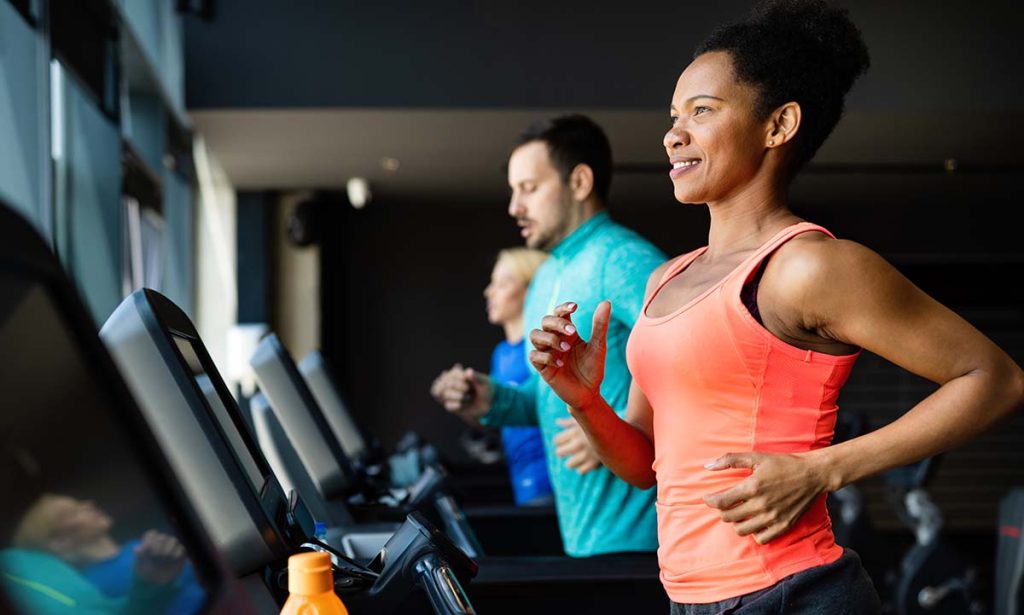
After your run
- Make sure you re-hydrate well: You will sweat far more than usual so replace lost fluids and salts by drinking regularly throughout the day. Consider some electrolytes or a salted snack (e.g. Salted peanuts) to replace lost salts.
- Cool down: Don’t jump straight in a hot shower but let your body come back down to temperature. Even better if you are near the coast and can enjoy a dip in the sea.
Most Importantly – look after yourself. Every person is different, adapts differently and has done different amounts of running in the recent hot weather.
Missing a run or two won’t hurt so if you feel unwell when running or like you just don’t want to run in the heat, then that’s ok. Just enjoy an ice cream & the sunshine instead.
